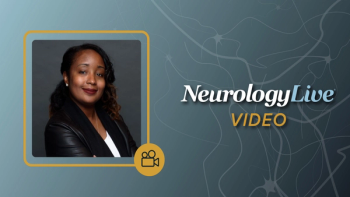
Understanding NMOSD in Relation to Multiple Sclerosis: Michael Levy, MD, PhD
The associate professor at Harvard Medical School spoke with NeurologyLive® about the differences between patients with multiple sclerosis and those with NMOSD. [WATCH TIME: 3 minutes]
WATCH TIME: 3 minutes
“We used to think [NMOSD] was a variant of multiple sclerosis, as the phenotype looks the same with optic neuritis and transverse myelitis. Patients with multiple sclerosis get those two but for a long time, NMO was just thought to be a more severe type of multiple sclerosis. We know that the immunology is completely different between these diseases.”
The pathogenesis that contributes to the diagnosis of neuromyelitis optica spectrum disorder (NMOSD) is a major autoimmune antibody called anti-aquaporin-4 (AQP-4) immunoglobulin G (IgG).1 A key factor that influences the prognosis of NMOSD is the age onset of the disease. According to recent research, approximately 40% of patients with NMOSD are misdiagnosed with multiple sclerosis (MS) or other similar-looking diseases.2 NMOSD is often presented as a disability with severe sensory impairment, combined with sleep disorders, which may directly impact a patient’s quality of life.
REFERENCES
1. Min W, Zhang L, Wang S, Xue M, Guo C, Zhu M. Clinical characteristics of late-onset neuromyelitis optica spectrum disorder. Mult Scler Relat Disord. 2023;70:104517. doi:10.1016/j.msard.2023.104517
2. Smith AD, Moog TM, Burgess KW, McCreary M, Okuda DT. Factors associated with the misdiagnosis of neuromyelitis optica spectrum disorder. Mult Scler Relat Disord. 2023;70:104498. doi:10.1016/j.msard.2023.104498
Newsletter
Keep your finger on the pulse of neurology—subscribe to NeurologyLive for expert interviews, new data, and breakthrough treatment updates.




























